A deck is an additional space that you can use to add aesthetic appeal, entertain guests, rest, or add value to your home. After some time, due to the weather elements, it will look dull, tired, and even worn out. The solution is to make it look new again. However, can rain interfere with or impede this process? Let’s find out what the experts have to say.
No, you cannot sand your deck after it rains. The deck should be thoroughly dry before sanding it for a perfect finish.
Sanding is part of the process of beautifying your deck. Keep reading to understand why your deck should be completely dry before sanding it and how rain can ruin the restoration process. In addition, learn the benefits and drawbacks of a dry deck before sanding and how often you should do it.
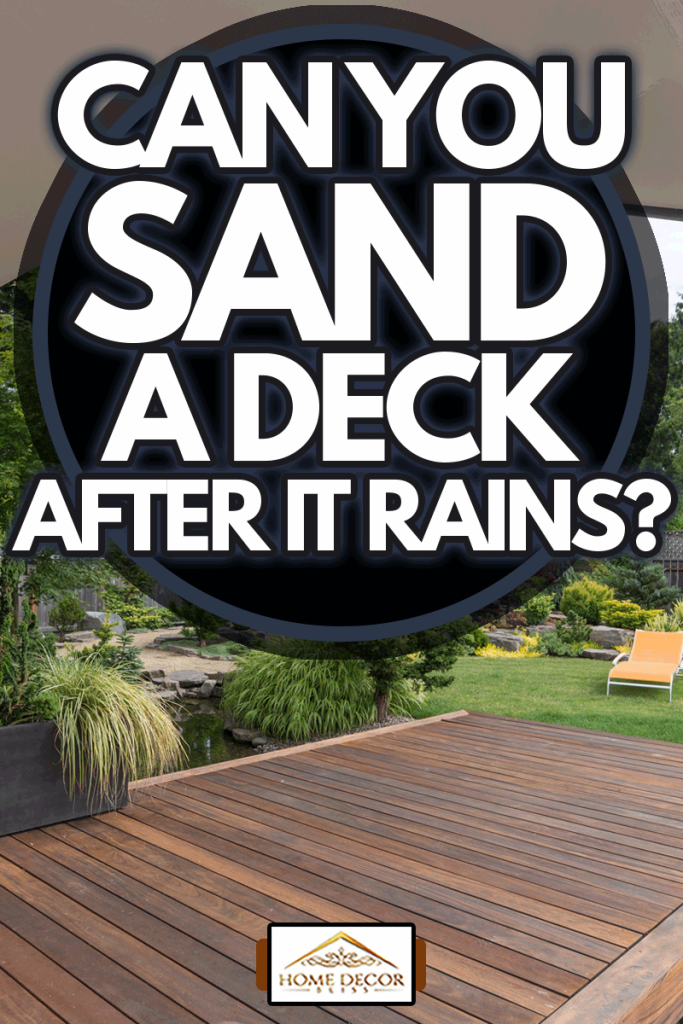
Can You Sand Your Deck After It Rains?
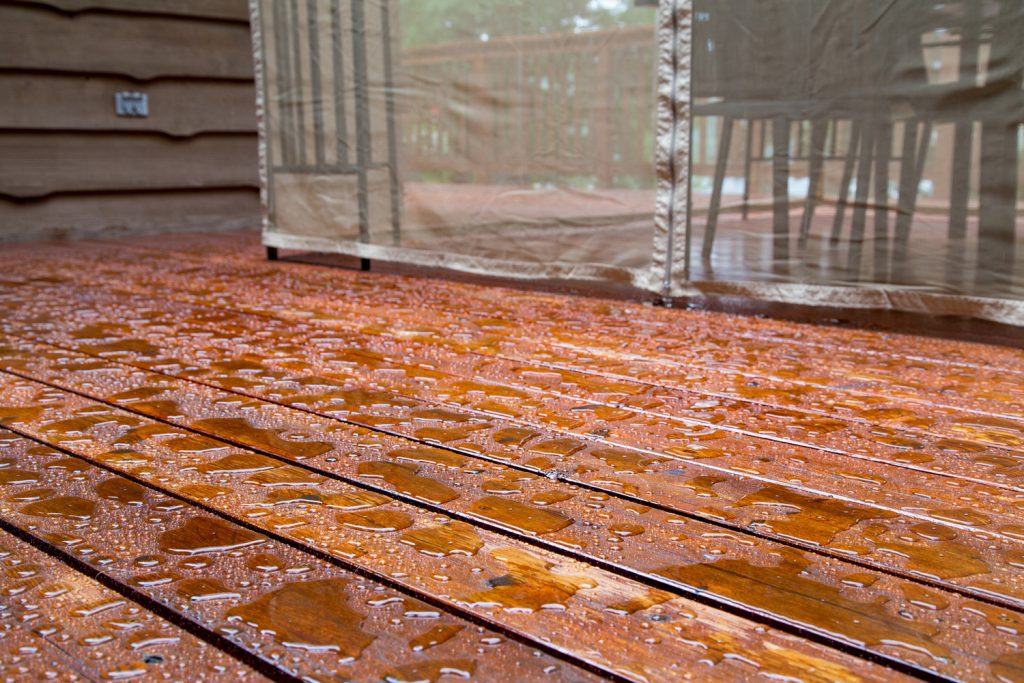
We may include affiliate links and curated AI content to highlight top design styles.
Sanding is part of the cleaning and preparation process when refurbishing your deck. Before cleaning your deck, it's important to inspect for any damage and repair where needed. For example, replace old screws and nails with new ones, trim the splinters, and fasten loose boards.
The next step is to wash your deck with water or chemicals and then let it dry. Afterward, smoothen it using a ceramic sanding belt like the one shown below.
You will be required to change the sandpaper grit at least twice or thrice to a higher number as you sand your deck until it is smooth enough to apply a finish.
Have a look at this ceramic sanding belt on Amazon.
But, can the rains impede the preparation process? Let’s find out below.
Sanding Before It Rains
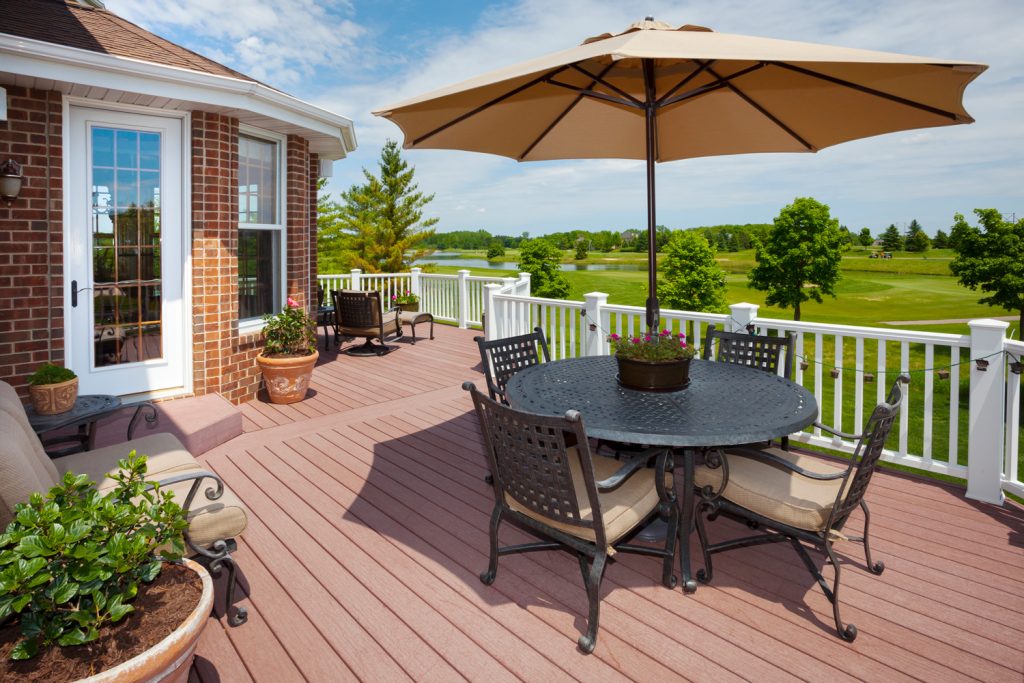
Cleaning is part of the initial process for restoring your deck. It washes off dirt, mold, algae, and gray areas that occur due to oxidation.
If you have an unfinished deck, wash it with bleach diluted in water, not forgetting to scrub the areas that have grime. Afterward, rinse with water using a hose pipe or power washer, and then allow it to dry completely. The bleach is particularly great for killing mold and mildew.
If you have a finished deck, apply a deck stripper using a pump sprayer. Like the unfinished deck, rinse thoroughly with water using a power washer or hose.
So, in either case, you need to allow the wood to dry after cleaning and before sanding. The wood fibers splinter during the drying process, which you remove by sanding. However, if it rains before sanding, you will have to wait for your deck to dry.
In addition, if it rains after sanding, you will be starting from square one because the wood will get wet and splinter again. Thus you’ll have to wait for it to dry so that you can prepare the surface by sanding it yet again. It will take you longer to finish your deck than it actually should.
Benefits Of A Dry Deck Before Sanding
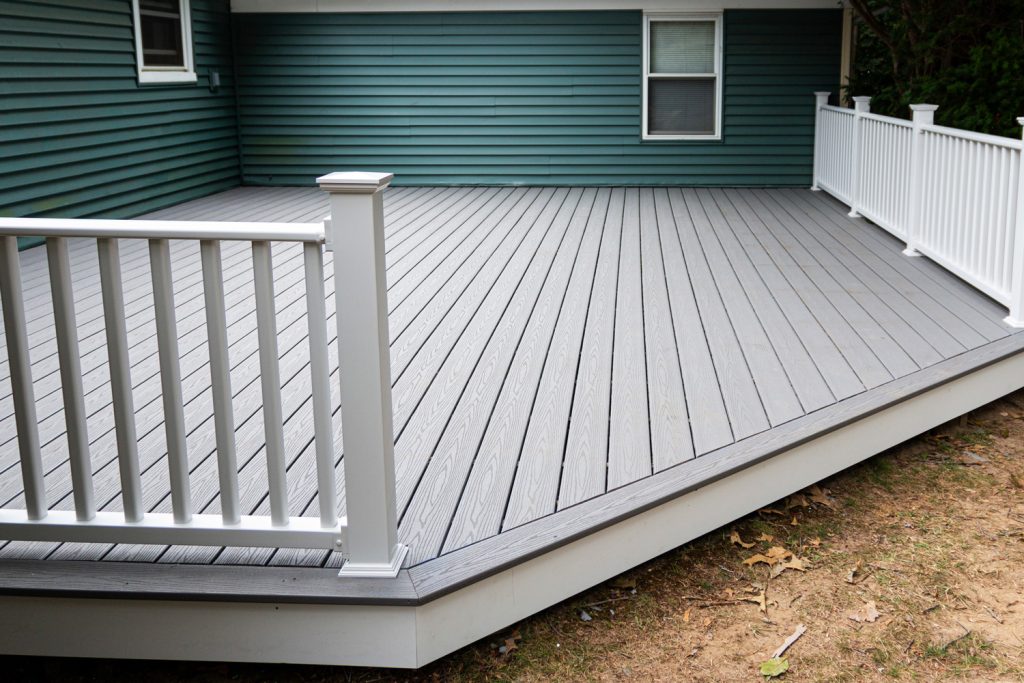
A perfect finish is what you need after washing and sanding your deck. That is why you should check the weather forecast to ensure it will not rain before sanding. Otherwise, the results will be substandard. Therefore the benefits of a dry deck before sanding include the following.
Better Adherence And Absorption
If you prefer a more natural look, staining your deck when it is dry will absorb easily, bringing out the color of the wood. Paint also bonds well to dry wood, providing a good finish.
Thus, don’t apply paint on a damp deck even though you have sanded it because it will not provide adequate protection against the elements. Instead, allow it to dry for at least 24 hours after raining.
Smooth Finish
As seen earlier in this post, let your deck dry thoroughly after washing and then sand it. It gives your wood that smooth finish after applying a sealant, paint, or stain.
Longer-lasting Finish
Whatever finish you prefer, it will last longer on a dry surface. If applied on a wet surface, the moisture will block the absorption of the finish, impeding adherence to wood.
Drawbacks Of Sanding A Wet Deck
The purpose of sanding your deck is to prepare to stain it or apply paint or a sealant. However, as earlier noted, it should be dry. There are disadvantages of doing otherwise, as explained below.
Staining Wood
If you stain on wet wood, the following will happen:
Difficult To Prep The Wood
If the wood is wet, the sandpaper will soak up moisture, making it difficult to prep your deck.
Inability To Bond
The stain will not bond well to wood when wet. The moisture will fill the wood pores, stopping the stain from penetrating the wood to allow bonding.
Bleeding Through
When you stain on wet wood, it will cause the oils, tannins, and moisture to bleed through the wood and the stain when it dries. Your deck will appear to have patches, preventing the color from being even.
Takes Longer To Dry
The drying time is longer for staining wet wood. A stain dries as the solvent in it evaporates. But, when the wood is wet, the stain will dry more slowly because the moisture prevents the solvent from evaporating.
Sticky Stain
A sticky stain mainly occurs when you use an oil-based stain, while a water-based stain works better on damp wood. However, it will still be shoddy compared to if it was applied to dry wood.
Sealant
As explained earlier, applying the sealant on a wet deck will form blotches on the wood. Since the stain cannot penetrate the wood, it forms beads on the water. This is dangerous because it causes your deck to become slippery.
Paint
Painting on wet wood will trap moisture inside the wood, which will prevent it from drying. It will cause the wood to rot. So, it makes much more sense to wait until your deck is dry.
How To Know Your Deck Is Dry After Rain
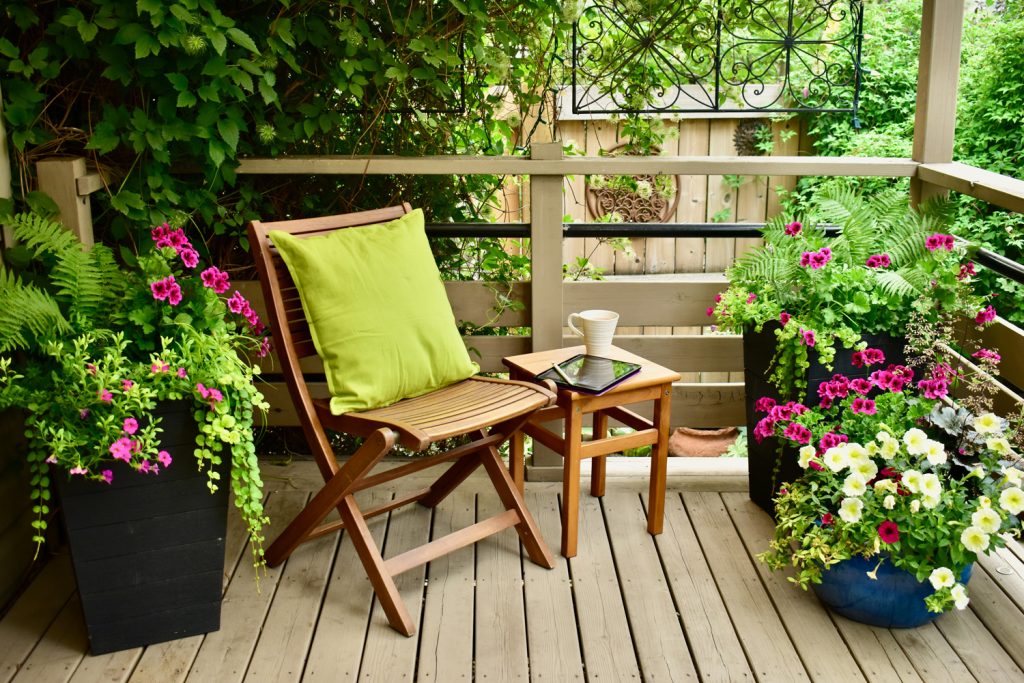
If it rains, wait for your deck to dry before sanding it. You should wait between 24 and 48 hours before sanding, after which you may apply the finish. Moisture prevents the sealant, paint, or stain from adhering to the wood. After a few rainstorms, it will most likely be washed off.
The following are ways of knowing your wood is dry:
Water Test
Even if you think your deck is dry, test it to be sure. Sprinkle drops of water onto the wood, and if it is absorbed, it is dry. If it forms beads of water on the wood, wait until it dries.
Wood Feels Hard And Dry
If it rains after sanding your deck, wait until it dries. When you feel the wood with your hands, it should be hard and dry. If it is wet, it will be moist.
Creation Of Splinters Or Raised Wood Fibers
As seen above, one of the ways of knowing your deck is dry is when you see splinters or raised fibers. If your deck is still wet, you will notice none of these.
Moisture Meter
View this moisture meter on Amazon.
The moisture content for dry wood is supposed to be less than 15%. You can use this gadget on your deck to know the moisture level. It works by inserting the needle on the meter into your deck and providing a reading indicating the amount of moisture.
Sandpaper Glides Smoothly On The Wood
As you sand your deck and the sandpaper gets stuck, it means it is still wet.
In Closing
For high-quality results, your deck should be dry before sanding and applying any finish. This frees up the pores in the wood to allow the sealant, paint, or stain to adhere to the wood.
On the other hand, wet wood will give you contrary results. It is good to check if your deck is dry after rain, and there are several methods to choose from to do this.
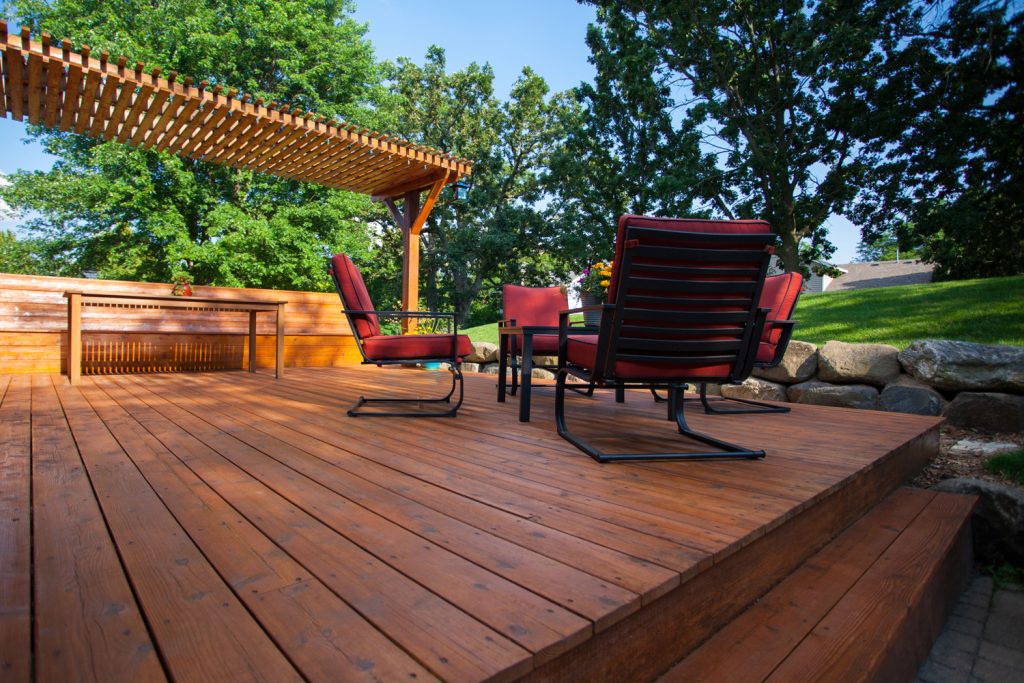
Are you wondering what color to paint your deck? Click here for more information: What Color Should I Paint My Deck
Find out the difference in costs between a wooden deck and a concrete patio by clicking here: Is Wood Deck Cheaper Than Concrete Patio





